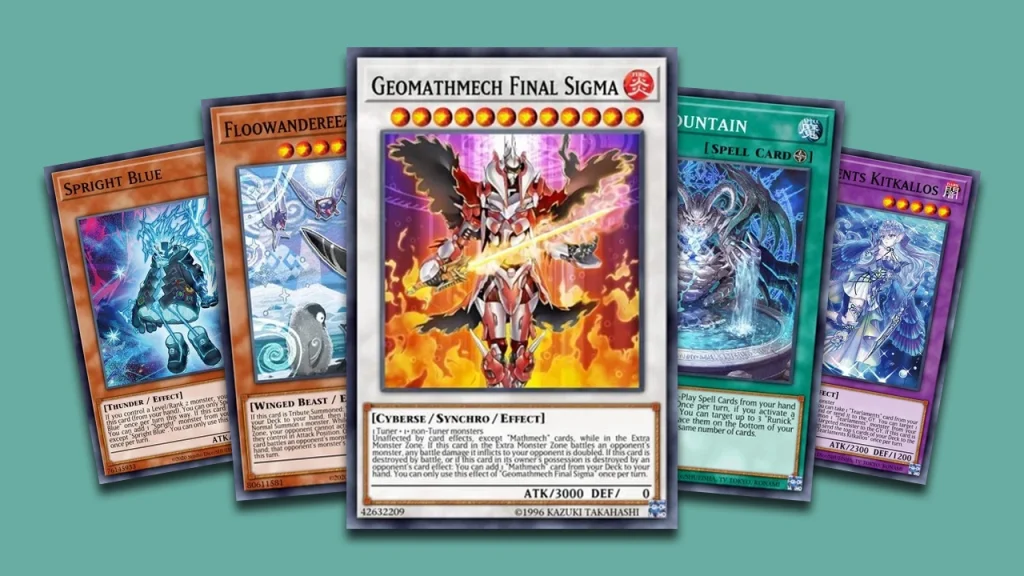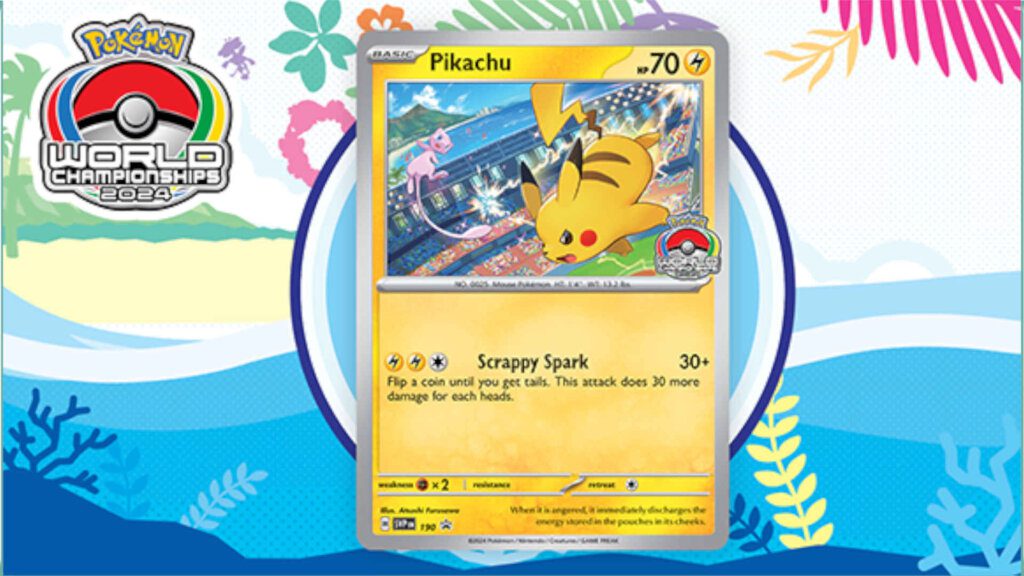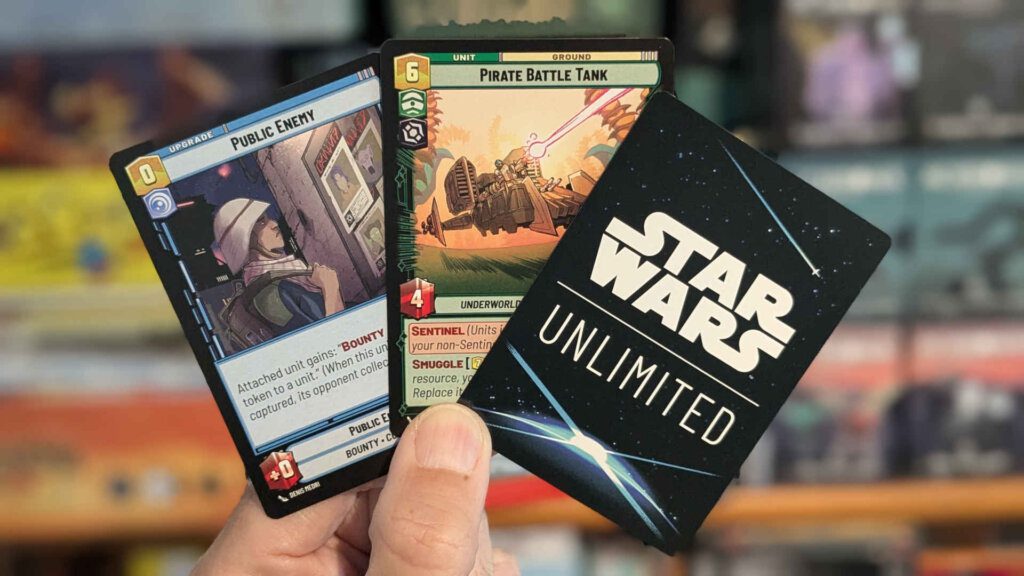There are a lot of decks in Yu-Gi-Oh. Unlike many other TCGs, there’s no rotation in sets, meaning that every card is playable at every given time.
You can build whatever you want, play whatever cards you want, and probably lose with whatever decks you want.
But what are the very best decks? We’ve collated a list of the best decks, in addition to starting out with some decks you should absolutely avoid if you want to win.
Now, we move on to the best decks that you can play in Master Duel. Something important to note here is that these aren’t necessarily the best decks overall in Yu-Gi-Oh itself, and a lot of decks in Master Duel actually aren’t very good in the main TCG game but ARE good in the game thanks to a completely different ban list.
We’ve got a selection of decks that you could build, why you should build them, and above all else why they’re actually really good in the Yu-Gi-Oh Master Duel meta game.
Table of Contents
Toggle1. Tearlaments
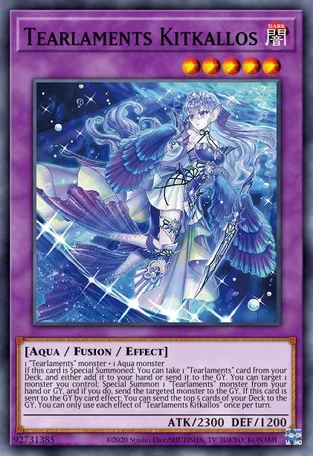
Tearlaments is a deck that probably needs no introduction, but we’re going to go for it anyway. Tearlaments is a deck that relies entirely on the ability to send cards from the deck to the graveyard. Once Tearlament cards hit the graveyard they have various different effects but the main one is the ability to fusion summon a monster by shuffling cards from the graveyard back into the deck.
This can lead to a lot of card advantage and gives the player the chance to recycle a lot of really great cards, while also putting some pretty big monsters on the board that can interact with your opponent’s cards.
An extremely popular variant on this deck is the Tearlament Ishizu variant, which uses the Ishizu cards to send more cards from your deck to the graveyard. Once an Ishizu card hits the graveyard it can then send more cards from the top of your deck to the graveyard, which could lead to more Ishizu cards hitting the graveyard, which can give you a massive amount of overall card advantage.
The most popular fusion monster that the archetype has is Tearlaments Kitkallos, a monster that allows you to send any card from your deck to the graveyard, which can lead to even more card advantage and make your board terrifying to look at. If you don’t want it in your graveyard, then you can even add the card to your hand. Kitkallos reads as follows:
“During your Main Phase: You can reveal 1 Level 1 “Floowandereeze” monster in your hand and banish 1 “Floowandereeze” card with a different name from your Deck, then, immediately after this effect resolves, Normal Summon the revealed monster.
If your opponent Normal Summons a monster: Immediately after this effect resolves, you can Normal Summon 1 “Floowandereeze” monster. You can only use each effect of “Floowandereeze and the Magnificent Map” once per turn.”
The thing about Tearlaments though is that it might not remain meta for very long. A recent ban list in the TCG completely destroyed the deck, and Master Duel could be looking to replicate this effect at some point soon. Master Duel updates its ban list monthly, so keep an eye on that list.
2. Spright


The power of Spright can really be summed up by its Xyz. Gigantic Spright reads:
“For this card’s Xyz Summon, you can treat Link-2 monsters you control as Level 2 monsters for the material. The original ATK of this card has a Fusion, Synchro, Xyz, or Link Monster as the material becomes doubled.
During your Main Phase: You can activate this effect; detach 1 material from a monster you control, and if you do, Special Summon 1 Level 2 monster from your Deck, also neither player can Special Summon monsters for the rest of this turn, except Level/Rank/Link 2 monsters. You can only use this effect of “Gigantic Spright” once per turn.”
Spright is a whole archetype of level-two monsters that can special summon themselves under the condition that you control another level 2, rank 2, or link-2 monster. It’s incredibly easy to get a level two monster on the field too, by either normal summoning or using the quick play spell Spright Starter to special summon any Spright monster to the field.
Each Spright monster has a different effect too, with Spright Jet adding any Spright spell or trap card to your hand and Spright Blue adding any Spright monster to your hand.
The link monsters allow you to do multiple things, but the most useful one is Spright Sprind. On summon, this card can send from your deck to the graveyard any level two monster, and a lot of Spright Decks actually use Nimble Angler as that card can special summon any two Nimble monsters from your deck if it’s sent to the graveyard, making extended plays so much easier.
3. Runick
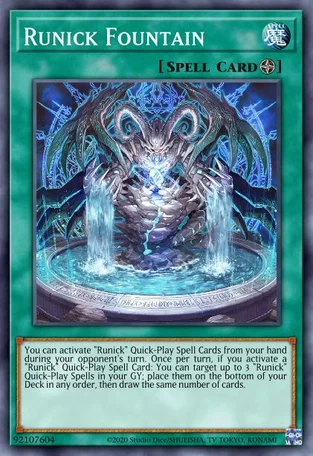

Runick is an annoying deck to play against, but it’s a deck that can reliably win if you get into a certain position early enough in the game. The entire purpose of a Runick deck is to make sure that you have the field spell for the archetype on the field before the end of your turn.
By doing this, you have the ability to activate quick-play spells from your hand on your opponent’s turn, and you can then shuffle a number of quick-play spells from your graveyard into the deck to draw that amount of cards. This means you can draw up to three cards on your opponent’s turn.
But what do those quick-play spells do? Well, they do a lot of different things. The most important part of those cards is the fact that they banish a number of cards from the top of your opponent’s deck.
The goal here is to deck out your opponent, to make sure that they can’t draw a card at the start of their turn.
The trade-off here is that you cannot conduct your next battle phase if you activate these cards, but luckily none of the monster cards (of which there are only fusion cards) are particularly great in battle. The best quick play spell is Runick Tip due to the sheer versatility of the card, and it reads as follows:
“Activate 1 of these effects, but skip your next Battle Phase after activation;
●Add 1 “Runick” card from your Deck to your hand, except “Runick Tip”, then banish the top card of your opponent’s Deck.
●Special Summon 1 “Runick” monster from your Extra Deck to the Extra Monster Zone.
You can only activate 1 “Runick Tip” per turn.”
Cards that can search for other cards are always incredibly powerful and automatic playsets in decks, and this is no different. The ability to add any Runick card from your deck to your hand means that you can prepare for any eventuality, and adapt based on both your opponent’s playstyle and your current predicament at the time.
The fusion cards help to add cards that you need such as the field spell or the continuous spell, which is rarely played but is actually pretty great. The continuous spell banishes an additional card from the top of your opponent’s deck every time a card is banished from the top of their deck, which makes decking out your opponent a lot more reliable and a lot faster than it previously was.
Runick is an outlier on this list in that it doesn’t really rely on monsters and doing as much damage as possible, but instead relies on strategy and planning on your behalf.
It’s easy to mess up, but if you don’t then it becomes extremely satisfying to watch your opponent lose access to every single card in their deck and not be able to even draw a card to defeat you. Just don’t rub it in their face that they can’t play the game, okay?
4. Floowandereeze
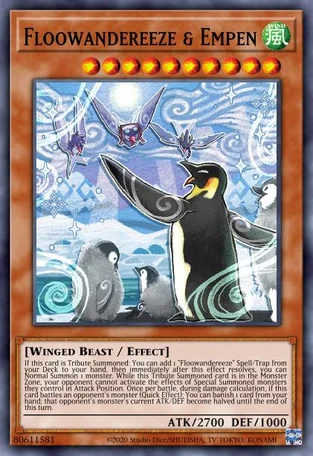

Outside of the extremely obvious joke that we know you’re thinking about, Floowandeereze is a pretty great deck. It focuses almost entirely on normal summoning, with cards that allow you to perform multiple normal summons in one turn. The field spell, Floowandereeze, and the Magnificent Maps allows you to banish a monster in order to normal summon a monster from your hand, stating:
“During your Main Phase: You can reveal 1 Level 1 “Floowandereeze” monster in your hand and banish 1 “Floowandereeze” card with a different name from your Deck, then, immediately after this effect resolves, Normal Summon the revealed monster.
If your opponent Normal Summons a monster: Immediately after this effect resolves, you can Normal Summon 1 “Floowandereeze” monster. You can only use each effect of “Floowandereeze and the Magnificent Map” once per turn.”
Banishing cards also allows for a lot of card advantage, as all Floowandeereze monsters have an effect that adds them to your hand when another Floowandeereze monster is normal summoned. What this means is that you can use the field spell to get a monster that you want in your hand into your hand with the greatest of ease, and it also allows you to set up your board for your boss monsters.
In terms of boss monsters, there are three: Raiza the Mega Monarch, Floowandeereze Empen, and Mist Valley Avian Apex.
Raiza The Mega Monarch can send cards from the field back into your opponent’s hand, Floowandeereze Empen is used to negate the effect of opponent’s monsters, and Mist Valley Avian Apex is used to negate any effect that you don’t want your opponent to activate, making it an incredible omni-negate tool to have on hand at any given time.
Apex Avian even negates by sending itself back to your hand, meaning that you can summon it all over again to do it again and again and again and again, creating a whole host of problems for your opponent.
5. Mathmech


Were you any good at Math at school? No? Well, get good at it now! Mathmech trades upon the core tenets of math: Division, Addition, Subtraction, and Multiplication, with some extra spice thrown in.
Mathmech Circular can special summon itself by sending any Mathmech monster from your deck to the graveyard, and if a Mathmech monster is special summoned to your side of the field while it’s face-up on the field, then you can add any Mathmech spell or trap card to your hand. With Circular you can send Mathmech Sigma to the graveyard which can then special summon itself as long as you have no monster in the extra monster zone. Mathmech Diameter special summons a monster from your graveyard, making XYZ summoning incredibly easy.
Speaking of XYZ’s, Mathmech has two primary cards it can go into. Primathmech Albertian has three different effects based on how many XYZ materials it has:
- 2 XYZ Materials: Add any Mathemech card from your deck to your hand
- 3 XYZ Materials: Add any level 4 monster from your deck to your hand
- 4 XYZ Materials: Add any spell or trap card to your hand
What this means is that you can really be flexible in your strategies and adapt on the fly. If you can get four XYZ materials under the card then you have the incredibly powerful ability to get any spell or trap, which has gotten other cards banned.
The other XYZ monster, while less often summoned, has the ability to send a card from your opponent’s hand to the graveyard, and those cards are always considered extremely good. Hand knowledge is a big part of Yu-Gi-Oh, and reducing your opponent’s card advantage is also a huge part of the game, and this card accomplishes both of those things. Thanks to the Mathmech Superfactorial trap, you can also XYZ summon on your opponent’s turn, which makes it a lot easier to stop your opponent from various plays.
The boss monster of the archetype, Geomathmech Final Sigma, is incredibly powerful too and does double damage if it’s summoned in the extra monster zone. It’s also immune to any card effects that aren’t part of the Mathmech archetype, so unless you’re playing in a mirror match, it’ll be basically impossible to get rid of. The card even floats, as you can read below:
“Unaffected by card effects, except “Mathmech” cards, while in the Extra Monster Zone. If this card in the Extra Monster Zone battles an opponent’s monster, any battle damage it inflicts on your opponent is doubled. If this card is destroyed by battle, or if this card in its owner’s possession is destroyed by an opponent’s card effect: You can add 1 “Mathmech” card from your Deck to your hand”
6. Drytron


Drytron is a pretty powerful ritual archetype that can special summon a whole lot over the course of one turn. Drytron Monsters can’t be normal summoned, and can only be special summoned by either tributing a ritual monster or from tributing another Drytron Monster. Each Drytron monster has an ability on special summon that can do one of the following options:
- Special Summon another Drytron Monster from the graveyard
- Add any Ritual Spell Card from your deck to your hand
- Add any Ritual Monster from your deck to your hand
- Reveal one ritual spell or monster and draw one card
Drytron is able to gain a lot of card advantage by tributing certain Ritual Monsters such as Cyber Angel Benten, which reads:
“If this card is tributed, you can add 1 Light Fairy monster from your deck to your hand”
This means that you can add a whole bunch of cards to your hand, such as Herald Of The Diviner, Eva, and Herald Of The Orange Light. Orange Light can negate Monster Effects simply by sending to the graveyard another monster. Eva can add monsters to your hand if it’s sent to the graveyard, and Diviner is a tuner that can increase its own level by sending a fairy from your extra deck or your deck to the graveyard.
7. Invoked Shaddoll


While Invoked Shaddoll isn’t a contender for the top three decks currently available to play in Yu-Gi-Oh Master Duel, it is a pretty fun deck to play. With the deck, you’re able to put out a lot of monsters onto the board, and a heft amount of negations onto the board to prevent your opponent from interacting with your field.
First, we have the Invoked side of the deck. Thanks to the easy access that the field spell Magical Meltdown gives to Aleister The Invoker, the main card of the Invoked strategy, it’s pretty easy to grab the cards you need. Magical Meltdown adds a copy of Aleister The Invoker, Aleister The Invoker adds a copy of Invocation and from that copy of Invocation you’re able to go into a wide swathe of Invoked fusions, including but not limited to:
- Invoked Elysium
- Invoked Mechaba
- Invoked Caliga
- Invoked Raidjin
- Invoked Cocytus
The card that you’ll usually be making is Invoked Mechaba, a card that can negate any monster, spell, or trap effect as long as you have that type of card in your hand at any given time. It’s an Omni-negate, which is incredibly useful. What makes this even better is that you can use fusion materials from your OPPONENT’S graveyard to make the fusion, giving incredibly easy access to any card.
Then you have the Shaddoll portion of the deck, which is another fusion archetype that has access to a lot more typings. Shaddoll Monsters are all flip monsters that also have effects when sent from the deck to the graveyard, but the big draw here is the fusion spell, Shadoll Fusion. Shaddoll Fusion reads:
“Fusion Summon 1 ‘Shaddoll’ Fusion Monster from your Extra Deck, using monsters from your hand or your side of the field as Fusion Materials. If your opponent controls a monster that was Special Summoned from the Extra Deck, you can also use monsters in your Deck as Fusion Material”
This card alone allows you to trigger any Shaddoll Monster effect, which ranges from allowing you to draw a card to adding any Shaddoll card from your deck to your hand. The fusions you can make with this card are also incredible, although you’ll likely mostly be making El Shaddoll Winda, a card that prevents both players from special summoning more than once a turn. You also have access to El Shaddoll Construct, a monster that automatically destroys any special summoned monster, so you have a way to get past anything you need to get past.
There are a lot of other great Yu-Gi-Oh decks on Master Duel, but these are the very best, and the ones that will likely give you more wins than losses. We’ll be updating this list as the meta changes though, so make sure to check back!
The Worst Yu-Gi-Oh Decks In 2023
1. Blue-Eyes White Dragon
Look, I know what you’re thinking. How can Blue-Eyes possibly be a bad deck when it has so much support and keeps getting new cards in seemingly every single new pack? Well, while some of the Blue-Eyes support has been incredibly good (Blue-Eyes Alternative Dragon springs to mind as the epitome of incredible legacy support for the archetype), a lot of it is really bad or is completely and utterly useless in the current meta-game.
Cards like Maiden With Eyes of Blue only activate when they’re targeted, either by a card effect or by an attack, but Yu-Gi-Oh has evolved to a point where a lot of cards don’t target at all, meaning that you can get rid of Maiden With Eyes Of Blue and similar cards without triggering them. There’s also the potential to brick, given the fact that a lot of the cards in your typical Blue-Eyes deck need to be special summoned using other cards and are otherwise unusable.
It’s a similar issue that comes up with a lot of old decks that were popularised throughout the course of the original Yu-Gi-Oh animated series. None of them are powerful enough to actually stand up against newer decks, and support for them is released so infrequently that by the time they release, we’ve moved onto a new thing.
2. Dark Magician
Out of the two main decks from the first Yu-Gi-Oh anime, Dark Magician has had the worst luck. There have been periods where Blue-Eyes has been meta-relevant, even a period where it was topping events, but Dark Magician has NEVER been meta-relevant. Indeed, only two cards from the entire Dark Magician archetype have ever been playable (Red-Eyes Dark Dragoon and Magician’s Souls) and one of those is completely banned in Master Duel. Magician’s Souls is a good card, but it’s been co-opted by any deck that wants easy additional draw power, and as such is mainly used outside of the archetype it was created for.
Not even the obscene amount of fusions can make Dark Magician good, and that’s even with a couple of really good ones such as The Dark Magicians and Dark Magician The Dragon Knight. The Dark Magician’s allows you to draw a card and then set it if it was a spell/trap, and Dark Magician The Dragon Knight protects your back row from destruction, which is a fatal issue that the deck has.
You see, one of the main cards in Dark Magician, Eternal Soul, has a clause on it in which if it leaves the field by an effect, you have to destroy every single monster you control. That’s not if it’s destroyed by a card effect too, that’s just if it leaves the field by a card effect, making it incredibly easy to disrupt the Dark Magician gameplan.
3. Heroes
The entire Hero archetype isn’t great. It has great cards, such as Destiny Hero Destroyer Phoenix Enforcer, and it has some decent splash ability in other decks, but as a deck on its own, it doesn’t really work very well. Part of that issue is to do with the rarity of the cards, with a vast majority of the cards that you need for the deck being a Super Rare or an Ultra Rare, and all of the necessary cards being dotted around various different packs.
A large part of the issue with Hero as an archetype is that it doesn’t really have a very good game plan. It’s a deck entirely about fusion summoning, and as a deck entirely about fusion summoning, it only focuses on that. Certain cards will entirely lock you out of other summoning mechanics, and the fusion monsters were created in a period of Yu-Gi-Oh’s history where they only had to do the bare minimum to be considered good. Now, though? They’re middling at best, with the very best of them being cards such as Masked Hero Dark Law and the aforementioned Destiny Hero Destroyer Phoenix Enforcer.
They don’t really have any negations or interruptions other than Destiny Hero Destroyer Phoenix Enforcer, and the modern era of Yu-Gi-Oh absolutely demands that a deck can stop another deck from playing, otherwise, that deck is fundamentally useless.
4. Red-Eyes
Out of every deck on this list, Red-Eyes is somehow the worst. Dark Magician, Blue-Eyes White Dragon, and Heroes at least occasionally win games, but Red-Eyes never wins a game. It has multiple ways it could potentially win a game, with an FTK strategy available, but the deck cannot play through any interruptions.
What makes it even worse is that the dedicated fusions pell for Red-Eyes, Red-Eyes Fusion, completely locks you out of doing anything else. The card has a clause that states “You cannot Normal or Special Summon other monsters the turn you activate this card”, meaning that all you’re going to be able to do is summon one fusion monster and pray to god your opponent doesn’t have a response. If they have Ash Blossom & Joyous Spring, then you simply can’t summon any other monster during that entire turn at all, rendering everything you’ve got useless and probably resulting in an immediate loss.
The monsters aren’t great either. While Blue-Eyes has Blue-Eyes Alternative White Dragon, a card that has seen a lot of competitive play and is easily special summoned merely by revealing another Blue-Eyes White Dragon in your hand, Red-Eyes has Red-Eyes Alternative Black Dragon. Instead of being summoned by revealing a monster though, you have to tribute a monster to special summon it, meaning that you’re sacrificing a whole lot of card advantage just to put a pretty mediocre monster on the board.
Even in the anime the deck only ever won through pure luck and through the owner of the deck, Joey Wheeler (hope you read that in the thickest Brooklyn accent possible), just absolutely destroying any rules that he came across in his quest to push a deck that has no staying power into the top cut. I mean seriously, the deck has a main deck Gemini monster that people still play. In 2023!
This article may contain affiliate links. If you use these links to purchase an item we may earn a commission. Thank you for your support.

